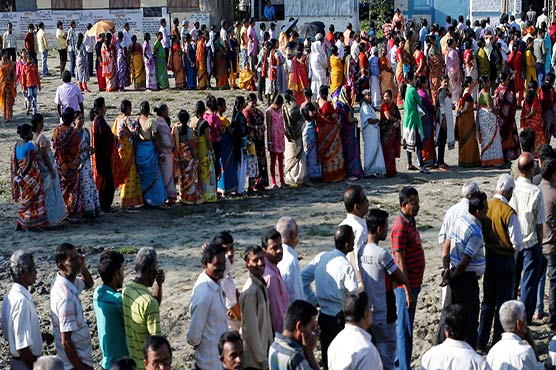India: the giant of South Asia

India still tops international lists of the world's most polluted cities.
NEW DELHI (AFP) - A marathon election that will last nearly six weeks got under way in India this week. Here are some key facts about the giant of South Asia.
Population giant
With 1.3 billion inhabitants, according to the United Nations, India ranks as the world’s second most populous country behind China with 1.4 billion.
Around 65 percent of Indians are under 35, according to government data, and the UN says India’s population will surpass that of China by 2024.
Capital New Delhi and financial hub Mumbai are both home to 20 million people.
Around 900 million Indians are eligible to vote in the election, making the vote the world’s largest democratic exercise.
Economic powerhouse
India became the sixth-biggest economy in 2017, according to the World Bank, and it is projected to overtake Britain as the fifth-largest this year.
While the IMF projects economic growth at 7.5 percent for 2019, this is down from previous levels and below the eight percent seen as essential to create enough jobs for its people.
A government report leaked in February showed unemployment at a 45-year-high of 6.1 percent in 2017-18. It has never been officially released.
Agriculture employs half the workforce but jobs are shifting to manufacturing and services, with IT outsourcing a flagship industry.
Millions of poor
Extreme poverty remains widespread in India, even if it has made significant progress.
According to World Bank estimates, 176 million Indians were in extreme poverty in 2015, living on $1.90 per person per day.
Half the population in total were below the poverty line.
India still tops international lists of the world’s most polluted cities.
According to UN figures, 14 of the world’s 15 most polluted cities are in India and New Delhi is the world’s most polluted capital.
An arch-enemy
Two centuries of British colonial rule ended in 1947 with the wrenching partition from Hindu-majority India of Muslim-majority Pakistan.
The neighbours have been in conflict ever since and have fought two wars over the disputed Himalayan territory of Kashmir.
They also went to war in 1971 over the struggle for independence of Bangladesh, then part of Pakistan.
The arch-rivals both became nuclear-armed powers in 1998.
Film and cricket crazy
Movie-mad India has the largest film industry in the world in terms of number of films produced -- between 1,500 and 2,000 every year in more than 20 languages, according to industry data.
Based in Mumbai, Bollywood has created megastars such as Shahrukh Khan, Amitabh Bachchan, Aishwarya Rai and Deepika Pakukone.
Cricket is another passion -- and an expression of the country’s rivalry with Pakistan -- with India a favourite for the World Cup beginning May 30.
The Twenty20 Indian Premier League is one of the wealthiest leagues in any sport, generating an estimated $6.3 billion last year.


